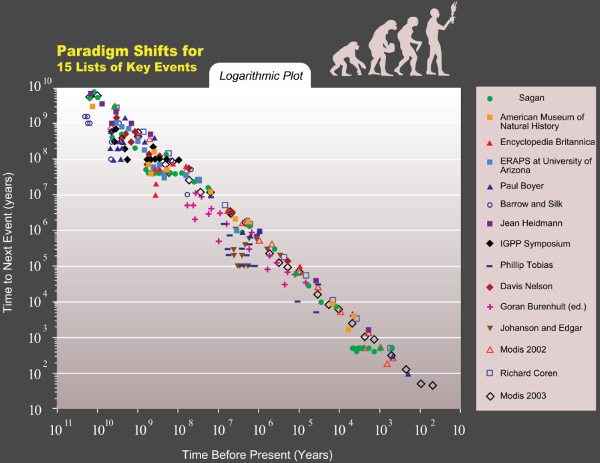The future smartphones psychology and Gen-Z
Futurism
A science, or semi-scientific field, that attempts to predict what will happen in the human world. Futurism is a profession where one looks at the past and history, observes the current present, and tries to predict what is to come. In fact, even occupational classification is a type of futurism. Right? We look at a person through their resume, ask what they worked on and how it went, ask them to perform tests of various kinds, simulations and work samples to examine their current state, and from all this try to predict the future – how they will do in our workplace. Should we recruit them or not? Will they succeed? Will they persist? Will they be the next star?
As people, we tend to constantly try to predict what will come. Certainty concerns us. Ambiguity is difficult for us. We will return to this later when we delve into generational differences, including the ability to bear ambiguity at work and in general. But as individuals and as humanity – we're a bit uncomfortable when everything is vague, confused, unknown, and broadly – in a process of change. But the truth is that we have no choice. We are in a process of change.
Now, some people might say, how is yesterday different from the day before? We are constantly moving forward, we are constantly changing, developing, progressing. This is true at the individual level. Certainly. A person does not remain as they were at age one, nor as they were at age 10, nor as they were at age 20. At age 40, we look back on our lives and see how we've changed, and at 60, wonder of wonders – we still continue to change, develop, grow, and progress.
Nevertheless, today is different from "yesterday and the day before" in a broader view. Let's look at the graph below [1] , a wonderful graph created in a Wikipedia project with a very wide variety of historical bodies. The graph shows us a variety of biological and technological changes in the last trillion years (actually 100 billion, which is 100 billion, 1011).
On theX axis, time is marked from now backward. For example, 10 – 10 years ago; 102 – 100 years ago; 103 – 1000 years ago... and so on. On the y axis, the interval between events is marked. We see in the graph that the pace of changes in history is not uniform. The interval between evolutionary events gets shorter and shorter. That is, major historical events that occurred 100,000 years ago (105) – their interval from the previous and next historical event was significantly larger than historical events that occurred 1,000 years ago.

Tkgd2007, CC BY 1.0 <https://creativecommons.org/licenses/by/1.0>, via Wikimedia Commons
And therefore, yes, one day is different from another, our feeling that the world is constantly changing is indeed correct, not a fiction or an "old people's feeling." The fact is that a person born in 1781 could broadly know what the world would look like when his son was born in 1807 and what employment opportunities might be available when he entered the job market in 1815. A blacksmith is a blacksmith is a blacksmith, a farmer is a farmer is a farmer, a laundress is a laundress is a laundress... but someone born in 1981 found it difficult to imagine how the world would look in 2007 and what the employment opportunities for their child would be when they turn 30 in 2037.
If we had asked the newspaper printer in 1930 what would be the fate of the typesetter, he would not have imagined that it would disappear from the world; if we had asked the newspaper producers of 1980 what the sales forecast was for 2010, they would not have guessed such percentages. After all, the population is growing, becoming more and more educated, so it is only logical that newspaper sales would skyrocket; and if we ask content managers on news sites today what their forecast is for another decade? Or let's say just five years, not "jumping over the stick," what would they say? Would they even risk saying something?
Before we check if anyone has anything to say on the subject of the future of work in light of the pace of technological changes we are experiencing, let's try futurism ourselves for a moment.
Here is a picture of average people living today.

Try to imagine - what will people look like in 20 thousand years. What will change?
20 thousand years:

What changes do you see?
The forehead is slightly larger, to accommodate the growing frontal brain, the part responsible for all our advanced thinking, complicated thinking operations, decision making, judgment, creative thinking, problem solving, etc.
The eyes are slightly larger, perhaps due to genetic engineering (large eyes evoke positive emotions), perhaps due to changes in the lighting we will experience as people.
The face is slightly more symmetrical, the nose more straight, the lips larger. Again maybe genetic engineering maybe "natural enhancement" that will occur?
Let's jump forward in time – 60 thousand years. What will be then? What will people look like?
60 thousand years:

What do you see? Is it similar to what you described to yourself?
Significantly larger eyes, forehead even larger than before, skin darkens due to very strong solar radiation, nose widens because oxygen is becoming scarce, pupils look strange because they include night vision components and a variety of special filters, natural or artificial implanted there...
Humans will try to preserve a "natural" appearance even as more and more technologies are inserted into their bodies, such as hearing and vision aids not only for those with disabilities in this area, but to enhance night vision, for example for military purposes, or Google glasses that will be implanted in the brain, a music transmitter implanted in the ear and even an internal movie projector...
In 100 thousand years:

Who could have imagined this???
The person who imagined this is an artist and researcher named Nickolay Lamm, who did the work in collaboration with Dr. Alan Kwan, a computational geneticist who works on trying to understand genetic sequences and genetic mutations with the help of complex computational processes and computer power.
Source of images: https://www.dailymail.co.uk/news/article-2337804/Huge-foreheads-flat-faces-saucer-like-eyes-How-human-face-look-100-000-years.html
We see that, in fact, it's not so easy to imagine and understand what will happen, how things will change, and certainly not easy to be right about it. Nevertheless, despite the difficulty in predicting the future, a McKinsey report [2] in 2017 tries to predict what will happen in the job market. Half of the jobs we do, McKinsey says, could become automated. This sounds terribly stressful, all of us will be replaced by robots and we will be... what? Obsolete? Well, no... only 5% of jobs can be fully replaced by automation, while all other jobs will allow humans to focus on more complex tasks, and work side by side with machines and robots.
This is what happened with the integration of technologies in agriculture. In the past, 50% of people worked in agriculture. My grandparents grew cucumbers in the field, cows in the barn, and chickens in the yard, and barely supplied the family's needs. Today, 5% of those engaged in agriculture can easily produce food for the entire country, and work alongside massive machines equivalent to the work of dozens and hundreds of people simultaneously. True, not in everything. True, it's difficult to make a living from agriculture. But from the perspective of a crisis in the job market or the ability of a professional sector to provide for its customers – society has handled the transition well.
This is also what happened in banks. When ATMs were introduced, the banking industry was in panic. All the tellers would be fired... and behold, a miracle. No. On the contrary, the number of tellers in the US has only grown since ATMs were introduced, but their role has changed. From withdrawing money from the cashier and giving it to people, they moved to performing more complex tasks, working with more sophisticated financial tools.
So we see that while certain jobs disappear, new jobs are created in their place, and other jobs change their nature. Who would have believed there would be professions like "content manager" or "social media manager"? In fact, McKinsey predicts that about 15% of workers will change professions by 2030, and that 8-10% new professions will develop. That is, if today there are 1000 professions, in a decade there will be 1000, but 80 of them will be professions that today we can't even imagine. Perhaps there will be music software implanters in the ear or maybe there will be psychologists for robots who complain about their owners. The point is that new jobs are becoming more and more complex (hence the forehead is growing...), they are less manual labor and more artistry and emotional work, they require more training, more guidance, more learning. So there will likely be a period of adaptation, even shock, but if history can teach us anything, it's that things will work out.
Can we still try to say something other than "things will work out" and "we as a society will adapt"? Because these changes are happening with great speed and intensity, and besides saying "we are living in a transitional period," perhaps we can also build a process that will allow the transition to occur in a better flow? To answer this question, we need to change perspective, not to look at a broad time perspective, but rather at the "here and now".
Generational Differences in the Labor Market
Logipass has been evaluating employees for various positions since 2009. Tens of thousands of examinees tested in the system allow us to see a picture regarding different ages and at different points in time. At the pace of changes we've seen - a decade is very significant. So data from Logipass shows that...
Strengths of the Veteran Generation compared to the Young Generation:
· Independence
· Responsibility
· Calmness
· Active under pressure
Strengths of the Young Generation compared to Veterans
· Social engagement
· Social confidence
· Empathy
· Friendliness
· Emotional awareness
Weaknesses of the younger generation compared to the veteran generation:
· Consistent tardiness
· Accuracy in time reporting
· Sloppy work
· Lack of responsibility
· Non-compliance with procedures
· Damage to the organization's reputation
A picture emerges of the "adults" generation as a responsible and independent generation, relaxed and coping well under pressure, acting fairly and honestly towards the organization. In contrast, the younger generation is characterized by higher levels of social involvement, caring, sociability, social ease, and emotional awareness, but struggles to meet organizational norms currently prevalent in most organizations.
The Harvard Business School has been collecting extensive data on its students for decades, if not hundreds of years. They provide evidence of generational gaps. They ask all twenty-year-olds who come to study business management the same questions. They asked these questions in 1970, when those born in the 1950s arrived, asked again in 1990, when those born in the 1970s arrived, and asked again in 2000 when those born in 1980 arrived, and so on. And they can see that there are intergenerational differences. For example,
· Expect my manager to give me special treatment – 58% of 1980s children, 31% of 1960s children.
·
Prefer a structured environment and clear rules – 72% of those born in the 1980s, 33% of 1960s children.
Note that younger people prefer a structured environment with clear rules, but data from Logipss show that they find it difficult to comply with these rules.
There is a great generalization here, certainly at the individual level we can all think of examples of people who are actually exactly "opposite" – older workers who are very socially relaxed, involved, caring and emotional; and young workers who are responsible, professional, and cope well under pressure. But here emerges a picture of different characteristics of generations in the labor market. Why were these differences created?
"Generation" is defined as a group of people who were born in a shared historical and socio-cultural context, experienced similar formative experiences and developed shared characteristics as a result, these characteristics are called "generational consciousness". Despite the fact that human development is identical across generations, the environment in which development occurs changes, and therefore the developmental outcome, namely the adult and their consciousness, is different.
Several generations currently operate simultaneously in the labor market:
· The Veterans generation – born 1940-1950, usually in very senior positions, approaching retirement and exit from the labor market.
· Generation XX – born 1950-1970 (some overlap with the Palmach generation, depending on classifications), usually in established positions in the labor market.
· Intermediate layer, Transition generation, children of the 1970s-1980s.
· GenerationY – born 1982 (birth of the Internet)-1995, in entry positions in the labor market.
· GenerationZ – born 1995-2010, the first of whom are 22 years old, taking first steps in the labor market, entering directly or after studies.
So what is the context that can explain these intergenerational differences?
Technological Context
Despite the fact that the entire society (culture) experiences the same cultural changes, the age at which a person is during these changes greatly affects their development. For example, we distinguish between what are called "technological native speakers" and "technological immigrants." Native speakers are children born in 1982 and onwards, who were born into the internet world. This is Generation Y. Even more natural speakers are Generation Z children, born in 1995 and onwards, who were born with a smartphone in hand, tablets, interactive entertainment systems, and more. Everyone else – we are immigrants. Learning the language but it's not natural to us. Still dreaming in analog, as the song says "But at night I still dream in... analog." That is, Generation X (born in the 1960s-1970s) and the generations before them know that every question in the world – Google already knows the answer to it, but when they grew up they looked for answers in heavy encyclopedias, with considerable effort. Therefore, Generation X's reading of Google is usually deeper, longer, and more integrative than that of native Google speakers. "Technology immigrants" (older generations) learned to adapt themselves to technology, while the younger ones developed with it together, and it doesn't drain them of mental resources. Research is conducted on the internet, market research on social networks, speeches and presentations are based on visual aids and not on "tightening" the content.
The fact that Google has an answer to everything means there's no need to make an effort and work hard to expand knowledge, and in general, knowledge is something that doesn't need to be kept in the brain. External devices with unlimited access are more than enough. It seems that most of them "see" search results and don't "read" search results. Information processing processes are not linear, step-by-step, but include rapid and simultaneous judgment of information.
The technological influences are far-reaching. Increased exposure to technology affects brain development. Studies show that repeated use of technology indeed changes the structure and activity of the brain, a state called the "Brain Gap" (in parallel to the "Digital Gap"). Their prominent thinking skills are in multitasking, splitting attention and visual scanning, skills resulting from the almost constant bombardment of stimuli from technology. "Multitasking" is actually the ability to give partial attention to a larger number of tasks. Simply – instead of giving 100% to one thing, you give 50% to two things, and in exaggeration – 0% to the whole world... Physical presence exists, but social or cognitive attention is not given. All of these are expected to intensify even more in Generation Z children, who are exposed at much higher levels to technologies and visual information bombardment, and the brain effects on them are even stronger.
Children of Y and Z are used to a world full of possibilities and choices, and to bombardment of a lot of information simultaneously. Their brain is rewarded for shallow processing and quick transitions. Their patience to wait is very short. Their working memory strengthens in this process – the ability to hold a lot of "active" information simultaneously, but this action is also very tiring for the brain. Therefore, they respond better to processes in which they are required to be active, partners in creating something digital or influencing its formation through their decisions.
Social Networks were born when the first Generation Y entered the job market, so they are not necessarily "networked" from birth, but Generation Z children were definitely born into a world permanently connected through technology. In fact, the situation is such that only sleep competes with our teenagers for hours spent on social networks, which reach up to 8 hours. Let's not be confused, these are 8 hours for Generation X, for Generation Z the time contracts because everything happens in parallel. 3 social applications open simultaneously and the teenager carries out activities in all of them at the same time. "Battery Index" - know it? At what percentage of phone battery do you start to get anxious? 80% among young people in their 20s, much less (sometimes only when the battery turns red) among older generations. Maybe it's a funny measure, but it's a generational characteristic.
Fewer face-to-face interactions make it difficult to develop social skills. When face-to-face interactions are more frequent, the results are positive: a wide range of social emotions, a sense of normalcy and well-being, more sleep hours (which are linked to other positive outcomes such as academic success and emotional regulation), greater social success, fewer parents who think you're a "bad influence," less exposure to cyberbullying (which is very difficult to detect and address), higher empathic abilities (because when we don't get feedback on others' feelings, it's harder for us to calibrate our responses to maintain the social fabric, meaning – not hurt others). For example, they found that sensitive, caring, and "people-oriented" managers are a desirable commodity among Generation Y workers, but managers from Generation Y were not described as such at all...
Value-Economic Context
· Generation Y grew up with the "child-centered" approach, and now in the job market, they demand "employee-centered" approach.
· They were encouraged to maintain close and trusting relationships with parents, teachers, counselors... and now they are trying to replicate this model in the workplace with their managers.
· They grew up in systems that cocooned them, adapted to their needs, and brought each individual to success, with almost exclusively positive feedback. Now, they encounter a system where the norm is a uniform standard for everyone, without personal adjustments, and with negative feedback. They feel hurt and struggle to adapt.
· They grew up in an atmosphere of sociability, teamwork, and partnership, but with relatively weak social skills (social media). Therefore, they want to work in teams, but need clarity and rules.
· They grew up in constant competition, anxious about every grade. Therefore, they also experience performance anxiety at work.
· They grew up in a period of intensifying economic gaps, with a shrinking middle class, a trend that is becoming more extreme among Generation Z. They understand that the organization cannot guarantee them stability, livelihood, security, and therefore in return - they do not promise these things.
Adaptation and Driving Change
Each new generation coming of age encounters norms shaped by previous generations and works to integrate them within their generational cognitive framework. This is the expectation of adaptation that older generations direct towards the younger ones: you have arrived at an existing system, please adapt to it and enter the adult world.
At the same time, this integration also drives change, since most "old" norms were shaped based on previous historical, economic, and/or social processes, while the new generation represents the current situation and helps adapt norms to the present state.
There is a combination between expecting young people to adapt themselves to the organization and expecting the organization to adapt itself to young people and drive organizational change through them. A question that every organization can ask itself - to what extent is the process happening from both sides? To what extent is the expectation that "they" will change reasonable while the organization remains unchanged and "freezes" in time?
Generation Y is not easy to manage, because they want teamwork (but structured and with clear rules - is there such a team???), are committed to organizational goals (but want to choose tasks that suit them), ask for clear guidelines and rules (but are cynical towards them when given), and need constant feedback to guide their actions (but feel they are excellent and are easily hurt by negative feedback). Therefore, many managers feel they are difficult to manage, and 58% of HR managers report problems in "young-adult" relationships in the organization. This is especially true for Generation X managers, because when an X manager who grew up in a generation where they thought a manager shouldn't give special treatment to each employee meets a Y employee who grew up in a generation where they think every employee is unique and a manager should recognize this... well, problems arise. From an organizational development perspective, it helps to see them as children learning to ride a bicycle and act similarly, instead of "throwing them into the water to see if they swim or drown," an approach under which Generation X entered the job market.
So what does all this mean for the recruitment world?
The key to change is multidimensional change. On one hand, organizations need to continue changing their recruitment processes, becoming more digital, more visual, and more targeted as more digital children enter the job market. Recruitment processes need to be accessible from any smartphone, attractive in design, and simple to operate.
What can be done "only from the computer in the organization" - will be less accessible to most employees. What will be designed with extensive text and adapted for large screens - will make it difficult for young people to cooperate. What is complex and requires deepening in the process - will be pushed back.
But mainly recruitment processes need to be dynamic, constantly in motion, learning, evolving. Our young employees are signaling to us that it's time to make a change, to learn new tools, to utilize computer technologies and learning capabilities to refine processes.
At the same time, organizations will need to examine their requirements and expectations for the changing world and, as much as possible, make adjustments that will allow new generations to succeed and advance the organization in the new world. For example, is the time frame critical? Is the professional relationship the "red line"? Is dealing with difficulties the central thing? These criteria need to be integrated into the selection process at the forefront, so that they will tip the scales in favor of those who have already made progress toward the desired worker of the 21st century, or at least of 2018.
In conclusion, I want to quote Steve Jobs [3] , who said: "You can't connect the dots looking forward; you can only connect them looking backwards. So you have to trust that the dots will somehow connect in your future."
“You can't connect the dots looking forward; you can only connect them looking backwards. So you have to trust that the dots will somehow connect in your future.”
So that's what we have left to do - engage in futurism to the best of our ability, and trust that the processes will connect in the future in an accurate and correct way. Good luck to all generations.
On Smartphones, Psychology and Generation-Z
HR Conference Lecture 3.1.2018
Merav Hami, Psychologist,
Professional Manager – Logips Online Psychometric Assessment
We would be happy to hear your opinion!
LogiPass has dozens of additional interesting articles dealing
with issues of screening tests and career guidance.